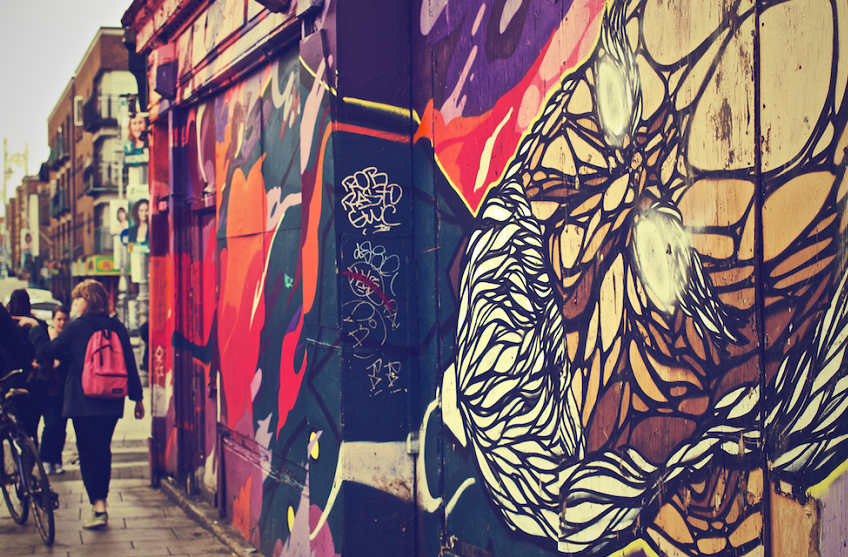Arts education has always been a contested area. Many arts educators have defended the arts in the school curriculum by emphasising their role in students’ moral and individual development. For example, EB Feldman, defending arts education in the US during the 1980s, argued that it should not be about creating artists but about something broader.
He suggests arts education can imbue in young people a sense of the satisfaction that comes from working to create something, the ability to use and understand language effectively, and a profound sense of ‘the values that permit civilised life to go on’.
Like Elliot Eisner and other proponents of arts education on both sides of the Atlantic writing in the 1980s and 1990s, Feldman argues cogently, showing a deep knowledge of art and history and an even deeper commitment to humanist principles. Now, more often than not, arts education is framed instrumentally. It is defended as a means of supporting the rest of the school curriculum (to make it more interesting), a means to enhance students’ employability, and a means of developing a good environmentally aware, health-conscious citizen.
The arts have a complex relationship with society, but arts lovers need to make a case for arts education that doesn’t harness it to contemporary moral, civic, social or economic priorities. And we shouldn’t resort to implying that without it people are likely to be stupid or more inclined to crime and immoral behaviour, or even that it makes people more employable. The Gradgrind mentality of relying on ‘facts’ – that is, ‘evidence’ that arts do good – allows little space for an intellectual consideration of the complexities of arts-based experiences.
Furthermore, arguments for arts or cultural education, made by vociferous advocates in the UK cultural sector, too often rely on dubious ‘brain science’ as supposed evidence that the arts are good for us. Research claiming to show evidence of the benefits of the arts does not stand up to scrutiny, as recognised by a recent OECD report, Art for Art’s Sake?.
Even El Sistema, the Venezuelan music-education programme, which takes impoverished young people and gives them a chance to perform music in public, shows the importance of clear focus, high motivation, collaborative effort and a lot of hard work, rather than music itself. Indeed, young people could achieve something similar by playing for a football team. The fact that people are so in awe of El Sistema says more about the low expectations of young people’s abilities than about the importance of the arts to society.
The arts are central to the idea of education being about inculcating a love of learning, of acquiring knowledge. It is no accident that the arts are traditionally connected with the idea of being educated. Hence an educated person is assumed to be interested in the arts.
A theconversation.com article points out that twentieth-century German philosopher Ernst Cassirer explained the importance of the arts as follows: ‘Science gives us order in thoughts, morality gives us order in actions; art gives us order in the apprehension of visible, tangible and audible appearances.’ A good education includes a good arts education, introducing children and young people to great literature (novels, poetry and short stories, plays), dance, visual arts, music and film. How a school prioritises the arts may be up for debate and depend on the specialist teachers schools have access to. But a school should still be committed to introducing children to the best there is in as many art forms as possible.
In the 1980s, arts educators in the US and the UK developed ‘discipline-based arts education’ (DBAE) as a way of clarifying what should be included in an arts curriculum. Rejecting the previous emphasis on ‘self-expression’ and child-centred learning, advocates of DBAE outlined four integrated areas of study around skills and making, historical knowledge, aesthetic understanding and critical judgement, with the aim of helping students to learn to think like artists and art critics.
A visual-arts curriculum might seek, therefore, to develop skills in, and experience of, a range of art techniques and processes using line, colour, texture and form. As nytimes.com mentions, these are not just technical skills, but skills in seeing and expression from an aesthetic perspective. For this reason, DBAE also develops in students a historical and cultural perspective in a variety of visual art forms, including painting, printing and sculpture; it explores ideas about what makes arts aesthetically pleasing or satisfying; and it develops capacity for judging and explaining judgements, as well as being able to participate in broader philosophical conversations about, for example, what constitutes art and whether beauty matters.
DBAE is still, formally, the basis for arts in the English national curriculum. But the instrumentalisation of education in the UK, making it more accountable to the needs of the economy and contemporary socio-political agendas, has taken its toll on arts education. The above-mentioned OECD report exemplifies this tendency: it frames arts education in terms of ‘skills critical for innovation: critical and creative thinking, motivation, self-confidence, and ability to communicate and co-operate effectively’.
Although we apparently live in a knowledge-based society, knowledge in the curriculum – particularly the arts curriculum – has been displaced by an emphasis on creativity. At the same time, the arts have been elided with creativity as a catch-all concept, a means to a successful and happy life. The arts now provide us with problem-solving skills, innovative mindsets, communicative attitudes and inspiration. Conceived thus, the arts have become the butt of banalities about everyday life, cohesive communities, a good society and a buoyant economy.
Everyday creativity, however, is very different to artistic creativity. The conflation of the two in discussions about democratising the arts and promoting arts education has led to a real devaluing of the arts, artistic knowledge and skill. Creativity arises from a complex synthesis of abstract knowledge, concrete knowhow of specific skills and processes, and inner drive; to downplay the importance of knowledge and knowhow in the creative process can only diminish it.
